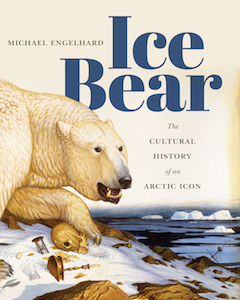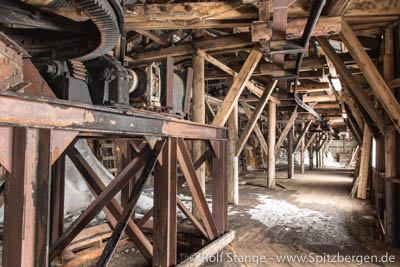-
current
recommendations- Liefdefjord
New page dedicated to one of Spitsbergen's most beautiful fjords. Background information and many photos.
- New Spitsbergen guidebook
The new edition of my Spitsbergen guidebook is out and available now!
- Liefdefjord
New page dedicated to one of Spitsbergen's most beautiful fjords. Background information and many photos.
Page Structure
-
Spitsbergen-News
- Select Month
- May 2025
- April 2025
- March 2025
- February 2025
- January 2025
- December 2024
- November 2024
- October 2024
- September 2024
- August 2024
- July 2024
- June 2024
- May 2024
- April 2024
- March 2024
- February 2024
- January 2024
- December 2023
- November 2023
- October 2023
- September 2023
- August 2023
- July 2023
- June 2023
- May 2023
- April 2023
- March 2023
- February 2023
- January 2023
- December 2022
- November 2022
- October 2022
- September 2022
- August 2022
- July 2022
- June 2022
- May 2022
- April 2022
- March 2022
- February 2022
- January 2022
- December 2021
- November 2021
- October 2021
- September 2021
- August 2021
- July 2021
- June 2021
- May 2021
- April 2021
- March 2021
- February 2021
- January 2021
- December 2020
- November 2020
- October 2020
- September 2020
- August 2020
- July 2020
- June 2020
- May 2020
- April 2020
- March 2020
- February 2020
- January 2020
- December 2019
- November 2019
- October 2019
- September 2019
- August 2019
- July 2019
- June 2019
- May 2019
- April 2019
- March 2019
- February 2019
- January 2019
- December 2018
- November 2018
- October 2018
- September 2018
- August 2018
- July 2018
- June 2018
- May 2018
- April 2018
- March 2018
- February 2018
- January 2018
- December 2017
- November 2017
- October 2017
- September 2017
- August 2017
- July 2017
- June 2017
- May 2017
- April 2017
- March 2017
- February 2017
- January 2017
- December 2016
- November 2016
- October 2016
- September 2016
- August 2016
- July 2016
- June 2016
- May 2016
- April 2016
- March 2016
- February 2016
- January 2016
- December 2015
- November 2015
- October 2015
- September 2015
- August 2015
- July 2015
- June 2015
- May 2015
- April 2015
- March 2015
- February 2015
- January 2015
- December 2014
- November 2014
- October 2014
- September 2014
- August 2014
- July 2014
- June 2014
- May 2014
- April 2014
- March 2014
- February 2014
- January 2014
- December 2013
- November 2013
- October 2013
- September 2013
- August 2013
- July 2013
- June 2013
- May 2013
- April 2013
- March 2013
- February 2013
- January 2013
- December 2012
- November 2012
- October 2012
- September 2012
- August 2012
- July 2012
- June 2012
- May 2012
- April 2012
- March 2012
- February 2012
- January 2012
- December 2011
- November 2011
- October 2011
- September 2011
- August 2011
- May 2011
- April 2011
- March 2011
- February 2011
- January 2011
- December 2010
- November 2010
- September 2010
- August 2010
- July 2010
- June 2010
- May 2010
- April 2010
- March 2010
- February 2010
- November 2009
- October 2009
- August 2009
- July 2009
- June 2009
- May 2009
- April 2009
- March 2009
- February 2009
- January 2009
- December 2008
- November 2008
- October 2008
- August 2008
- July 2008
- June 2008
- May 2008
- April 2008
- March 2008
- February 2008
- April 2000
- Select Month
-
weather information
-
Newsletter

| Guidebook: Spitsbergen-Svalbard |
Home →
Daily Archives: 11. October 2016 − News & Stories
New book: Ice Bear. The Cultural History of an Arctic Icon by Michael Engelhard
Michael Engelhard’s new book Ice Bear. The Cultural History of an Arctic Icon is about to be released in November. It throws light on the king of the arctic seen from a cultural history perspective and surely deserves to be announced here with this description with is written and compiled by its author.
Ice Bear
The Cultural History of an Arctic Icon
By MICHAEL ENGELHARD
NATURAL HISTORY
288 pp., 170 illus., 145 in color, 8 x 10 in. $29.95 paperback, November 2016
Prime Arctic predator and nomad of the sea ice and tundra, the polar bear endures as a source of wonder, terror, and fascination. Humans have seen it
as spirit guide and fanged enemy, as trade good and moral metaphor, as food source and symbol of ecological crisis. Eight thousand years of artifacts attest to its charisma, and to the fraught relationships between our two species. In the White Bear, we acknowledge the magic of wildness: it is both genuinely itself and a screen for our imagination.
Ice Bear traces and illuminates this intertwined history. From Inuit shamans to Jean Harlow lounging on a bearskin rug, from the cubs trained to pull sleds toward the North Pole to cuddly superstar Knut, it all comes to life in these pages. With meticulous research and more than 160 illustrations, the author brings into focus this powerful and elusive animal. Doing so, he delves into the stories we tell about Nature—and about ourselves—hoping for a future in which such tales still matter.
MICHAEL ENGELHARD works as a wilderness guide in Arctic Alaska and holds an MA in cultural anthropology from the University of Alaska Fairbanks. His books include a recent essay collection, American Wild: Explorations from the Grand Canyon to the Arctic Ocean. His writing has also appeared in Sierra, Outside, Audubon, National Wildlife, National Parks, High Country News, and the San Francisco Chronicle.
“Engelhard’s thought-provoking iconography explores in depth the multitude of cultural roles played by the polar bear.”
—David Fox, Anchorage Press
“Engelhard weaves together the disparate pieces of our eclectic social and cultural fascination with polar bears. A tapestry of images reveals our complex attachment to this Arctic icon.”
—Andrew Derocher, author of Polar Bears: A Complete Guide to their Biology and Behavior
Ice Bear. The Cultural History of an Arctic Icon by Michael Engelhard.
Source: Michael Engelhard
Old coal mines closed
Coal mining has always been an important part of Longyearbyen, though of decreasing importance today. The significance of coal mining is immediately visible for every visitor to Longyearbyen, as old coal mines can be seen in many places near Longyearbyen. Some of these old mines, such as mine 2B above Nybyen, locally known as julenissegruve (Santa Claus mine), are popular sites for walks both for locals and visitors. The old mining installations are interesting, often with scenic views, and fascinating for photographers.
The opportunities have recently been greatly reduced. Parts of the roof of a conveyor belt of mine 6 in Adventdalen have collapsed and the whole mining facility at mine 6 has been closed to the public.
It is said that it will be made accessible again after dangerous parts have been removed or secured. Large parts are still intact. But there is currently no time plan and nobody can say when the mine will be opened again for visitors. The difficult economic situation of the mining company, Store Norske Spitsbergen Kulkompani, does not make it easier. At least everybody involved is aware of the high historical and touristic value of the old mining installations, which are partly protected as part of the cultural heritage. This means that several authorities have to be involved in any work to clean up or secure the mines, something that is unlikely to speed up the process.
Currently, mine 1A (“American mine”, above the church), 2B (“Santa Claus mine”, above Nybyen), 5 (Endalen) and 6 (between Todalen and Bolterdalen) are closed until further notice.
At least, mine 3 is currently accessible as a museum for guided groups.
Mine 2B (“Santa Claus mine”) near Longyearbyen is amongst the old mines which are now closed for visitors.
Source: Svalbardposten
News-Listing live generated at 2025/May/09 at 18:41:33 Uhr (GMT+1)






























